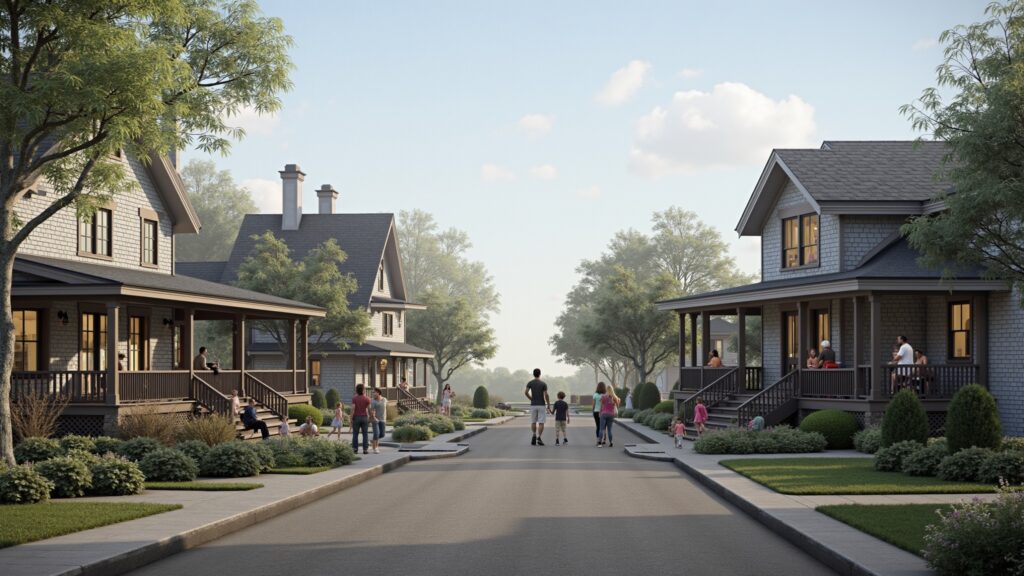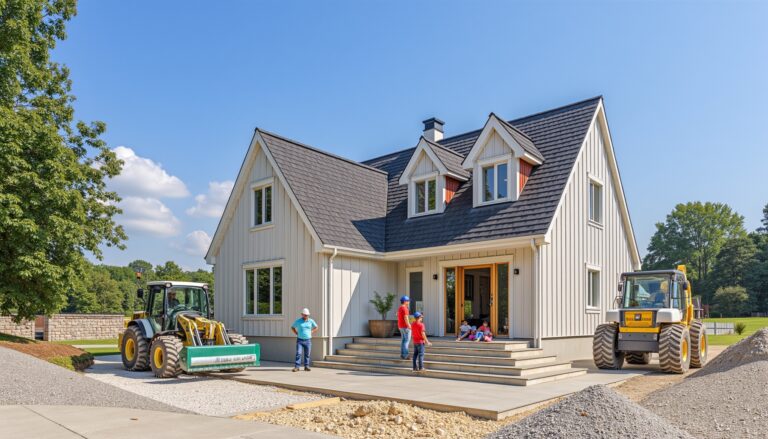In today’s dynamic real estate market, understanding property appreciation rates is essential for anyone looking to make smart investments.
Property appreciation rates refer to the increase in the value of real estate over time, which can significantly impact the return on investment (ROI) for property owners and investors alike.
This article will delve into the concept of property appreciation rates, explore the factors that influence them, discuss historical trends, and provide valuable tips for analyzing and investing in properties that are likely to appreciate.
Whether you’re a seasoned investor or just starting out, this guide will help you unlock the wealth potential locked within real estate.

Key Takeaways
- Property appreciation rates are vital indicators of potential investment returns.
- Key factors include location, economic conditions, and property characteristics.
- Historical trends help investors identify patterns and predict future appreciation.
- Analyzing appreciation rates involves examining local market data and economic indicators.
- Investing in properties with strong appreciation potential requires thorough research and strategic planning.
What are Property Appreciation Rates?
Property appreciation rates are a critical aspect to understand when investing in real estate, particularly in a vibrant market like Costa Rica.
These rates refer to the increase in the value of a property over time, which can be influenced by various factors such as location, economic conditions, and demand.
In Costa Rica, known for its breathtaking landscapes and robust expat community, property appreciation rates can vary significantly from one region to another.
Coastal areas and popular tourist destinations often experience faster appreciation due to high demand for vacation rentals and second homes.
Conversely, rural areas may see slower growth but can present unique investment opportunities.
For potential investors in Costa Rica real estate, keeping an eye on these appreciation rates can provide valuable insights for making informed decisions, ensuring that your investment appreciates value over time.
Factors Influencing Property Appreciation
When exploring Costa Rica real estate, understanding the factors that influence property appreciation rates is crucial for making informed investment decisions.
Several elements play a role in determining how quickly and significantly property values can increase in this beautiful Central American country.
Firstly, location remains a paramount factor; properties situated in tourist hotspots or areas with developed infrastructure tend to appreciate more rapidly than those in remote locations.
Additionally, economic conditions, such as a thriving tourism industry and foreign investment inflows, can drive demand for real estate, pushing appreciation rates higher.
The convenience of amenities, accessibility to public services, and the overall growth of communities also contribute to the desirability of properties, thereby impacting their value.
Lastly, as Costa Rica continues to be recognized for its commitment to sustainability and eco-tourism, properties that align with these values are likely to see significant appreciation in the coming years.
Keeping these factors in mind will help prospective buyers and investors navigate the Costa Rican real estate market with greater confidence.
‘The major fortunes in America have been made by people who were not afraid to be wrong.’
— John Paul Getty

Historical Trends in Property Appreciation
When considering investing in Costa Rica real estate, understanding historical trends in property appreciation rates is essential.
Over the past two decades, regions such as the Central Valley, Guanacaste, and the Southern Zone have experienced significant growth, driven by factors such as increased foreign investment, infrastructural developments, and a steady influx of expatriates.
For instance, between 2010 and 2020, property values in popular beach towns like Tamarindo and Playas del Coco saw appreciation rates as high as 10-15% annually.
These trends underscore the importance of researching specific areas, understanding local market dynamics, and assessing how lifestyle amenities, access to healthcare, and proximity to international airports contribute to property appreciation.
Ultimately, savvy investors can capitalize on these trends, ensuring that their investments not only retain value but also grow substantially over time.
How to Analyze Property Appreciation Rates
Understanding property appreciation rates is crucial for potential buyers and investors in Costa Rica real estate.
These rates reflect how much the market value of real estate property increases over time, influenced by factors such as location, market demand, and local infrastructure development.
To analyze property appreciation rates, start by reviewing historical sales data in the area you are interested in.
Look for trends over the past five to ten years, which can give you a clear indication of how property values have fluctuated.
Additionally, consider economic indicators such as job growth, population increase, and tourism statistics, as these can significantly impact demand and thus affect appreciation rates.
Engaging with local real estate professionals who have current market knowledge can provide invaluable insights and forecasts.
By thoroughly analyzing property appreciation rates, you can make more informed decisions on investing in Costa Rica’s vibrant real estate market.

Tips for Investing in Appreciating Properties
When it comes to investing in real estate, understanding property appreciation rates is crucial for maximizing your return on investment.
In Costa Rica, the real estate market has shown consistent growth, making it an attractive option for investors.
To capitalize on property appreciation, consider these tips: First, research areas with strong economic growth and infrastructure development, as these factors often drive up property values.
Look for locations with increasing tourist traffic and a growing expatriate community, as these can create demand for rental properties.
Additionally, choose properties in desirable neighborhoods that boast amenities such as schools, parks, and shopping centers.
It’s also wise to pay attention to the long-term trends and market forecasts in Costa Rica to ensure your investment aligns with projected growth.
Lastly, consider working with a local real estate expert who can provide valuable insights and help you navigate the nuances of property appreciation in this vibrant market.
By carefully selecting properties based on these criteria, investors can position themselves to benefit from the rising property appreciation rates in Costa Rica.
Conclusion: Making Informed Investment Decisions
In conclusion, when considering an investment in Costa Rica real estate, it’s essential to stay informed about property appreciation rates.
Understanding these rates can provide valuable insights into the potential long-term value of your investment.
Researching local market trends, evaluating locations with promising growth, and consulting with experienced real estate professionals can help you make informed decisions.
As Costa Rica continues to attract expatriates and tourists alike, the likelihood of steady property appreciation remains high, making this vibrant country an attractive option for prospective buyers.
Whether you’re looking for a vacation home or a rental property, knowing the nuances of property appreciation in Costa Rica can lead to rewarding returns on your investment.
Frequently Asked Questions
What are property appreciation rates?
Property appreciation rates refer to the increase in the value of a real estate asset over a specific period of time.
This rate is usually expressed as a percentage and indicates how much a property has increased in value compared to its original purchase price.
What factors influence property appreciation rates?
Several factors can influence property appreciation rates, including location, economic conditions, supply and demand dynamics, property features, local infrastructure development, and market trends.
Understanding these factors can help investors make informed decisions.
How can I analyze property appreciation rates?
To analyze property appreciation rates, investors should examine historical data on property values in the area, conduct comparative market analysis, consider economic indicators, and review trends in real estate markets over time.
Online tools and resources can aid in this process.
What are some tips for investing in appreciating properties?
Investing in appreciating properties involves researching neighborhoods with growth potential, looking for properties within high-demand areas, considering renovations to increase value, and maintaining a long-term investment strategy to maximize appreciation.
How do historical trends impact future property appreciation?
Historical trends provide insights into how property values have changed over time in particular areas.
By examining past appreciation rates, investors can identify patterns and make better predictions about future market shifts, helping to inform smart investment decisions.





